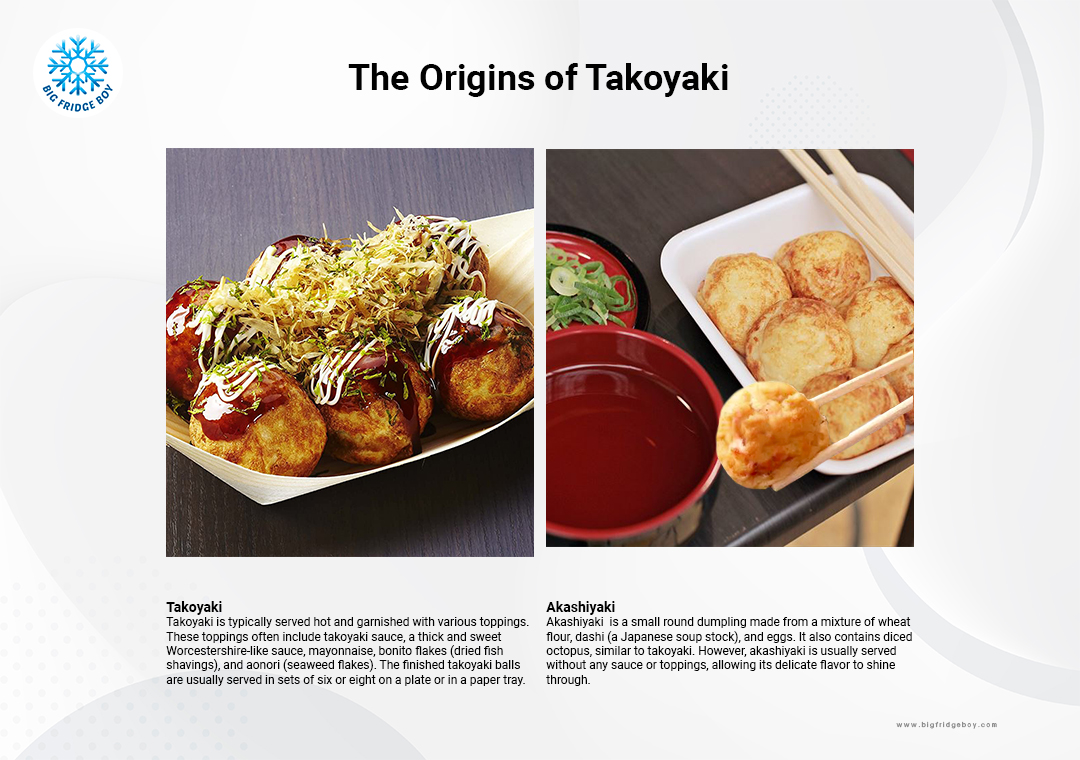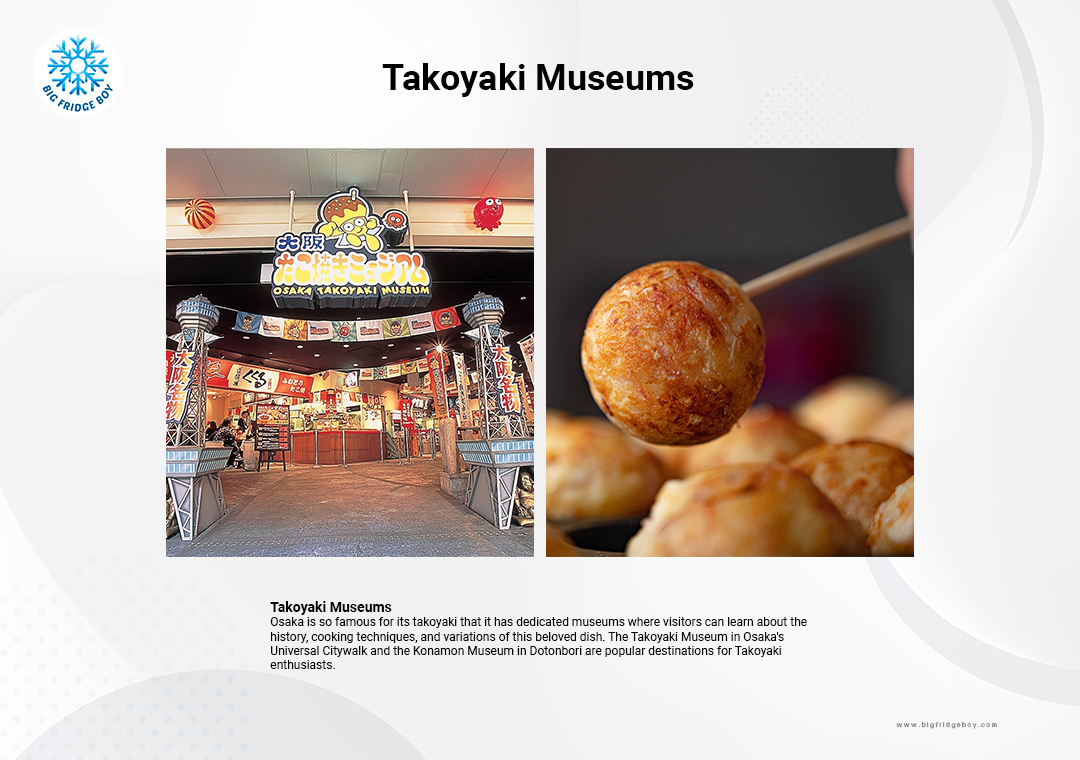"History of Takoyaki: Japan's Iconic Street Food"
Last updated: 25 May 2023 | 6520 Views |

Takoyaki is a popular Japanese street food that originated in Osaka. Its name literally translates to "Octopus balls" in English, as it is made from a batter filled with octopus pieces and other ingredients. Takoyaki has a long and interesting history that dates back several decades.
The name "takoyaki" itself reflects the primary ingredients of the dish."Tako" means octopus in Japanese. At the same time "yaki" came from “yaku” and refers to the cooking method, which involves grilling or frying. Hence, the name "takoyaki" aptly describes the dish.

The origins of takoyaki can be traced back to the 1930s in Osaka, Japan. A street vendor named Tomekichi Endo is widely credited with inventing takoyaki. Endo operated a small shop selling a similar dish called “Akashiyaki”, which was made with a different batter and did not include octopus as a filling. One day, he decided to experiment by adding octopus to the batter, and thus, takoyaki was born.
Initially, takoyaki was primarily sold as a snack food in Osaka's street stalls and festivals. However, its popularity quickly spread throughout the Kansai region and eventually to other parts of Japan. As its reputation grew, takoyaki became an iconic Japanese street food, loved for its delicious taste and unique presentation.
The traditional method of making takoyaki involves pouring a savory batter made from flour, eggs, and dashi (a Japanese fish stock) into hemispherical molds in a specialized takoyaki pan. Chopped octopus, green onions, and pickled ginger are then added to each mold. The cook uses skewers or special takoyaki turning tools to continuously rotate and shape the batter until it forms into a round ball with a crispy exterior and a soft, gooey center.
Takoyaki is typically served hot and garnished with various toppings. These toppings often include takoyaki sauce, a thick and sweet Worcestershire-like sauce, mayonnaise, bonito flakes (dried fish shavings), and aonori (seaweed flakes). The finished takoyaki balls are usually served in sets of six or eight on a plate or in a paper tray.
Over the years, takoyaki has undergone some variations and regional adaptations. Some people have experimented with different fillings, such as cheese, shrimp, or vegetables, while others have created unique sauces or toppings. However, the basic concept of takoyaki remains the same.

Takoyaki Museums: Osaka is so famous for its takoyaki that it has dedicated museums where visitors can learn about the history, cooking techniques, and variations of this beloved dish. The Takoyaki Museum in Osaka's Universal Citywalk and the Konamon Museum in Dotonbori are popular destinations for Takoyaki enthusiasts.
Takoyaki Eating Competitions: Takoyaki eating competitions are held in Japan, where participants compete to see who can eat the most takoyaki in a given time. These events are not only about speed but also require contestants to consume the hot takoyaki balls without burning their mouths. It's a fun and challenging way to celebrate this delicious snack.
Today, takoyaki is not only popular in Japan but also enjoyed by people around the world. It can be found in Japanese restaurants, food stalls, and even some supermarkets in various countries. The dish has become a symbol of Japanese street food culture and is a must-try for many visitors to Japan.






